11 January 2021
![]() 7 mins Read
7 mins Read
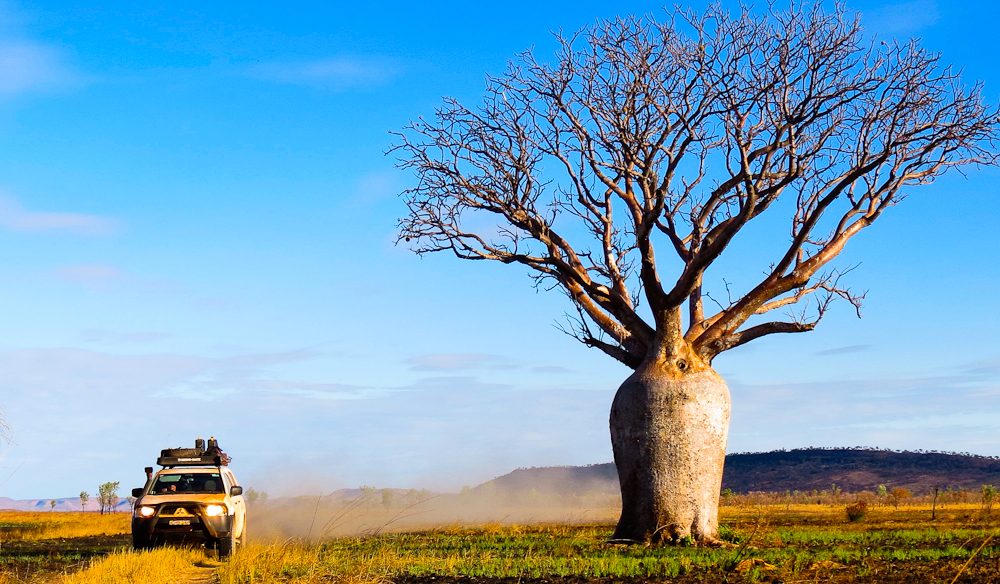
Travel writer and photographer Lee Atkinson has just returned from an epic 10-month, 40,000km road trip around the country, and written a book about it (see below). Here are her top 12 road trip travel hacks you need to know before you hit the road.
You don’t need a 4WD to drive around Australia, but you do need low range gearing to reach some of the most beautiful bits, because the really wild, wondrous places are almost always in out of the way places. If you are towing a van or camper trailer opt for a turbodiesel, because this type of engine works more efficiently than a petrol for towing and diesel is more readily available in remote areas. And go for an automatic, because autos allow you to just stick it in drive and concentrate on other things.
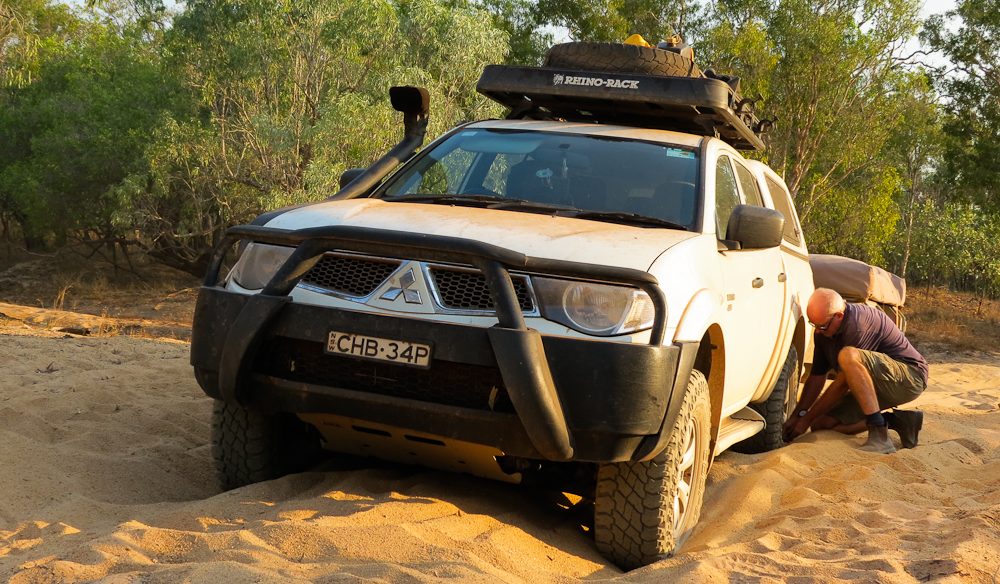
Deep sand means it’s time to lower tyre pressures (photo: Lee Atkinson).
The number one mistake most people make when choosing whether to buy a caravan, motorhome or camper trailer is to think in terms of what it will be like to live in, rather than where they can take it. If you’re planning to spend most of your time on main roads and want to stay in towns or caravan parks, a caravan or motorhome is a great option. But if your idea of a good time is taking the roads less travelled and getting out into national parks and wild places a camper trailer or a roof-top tent is a better choice. Bigger is not always better. There’s an exponential relationship between the size of your caravan or trailer and the extent to which you can get off the beaten track.
If you’ve never been outback or off-road before sign up for a 4WD training course. It will teach you how to use the vehicle to its full potential, how to get yourself out of tight spots and, most importantly, how to use recovery gear. Google ‘4WD driver training’. Same goes for towing: not only do you get plenty of time, and traffic-free space, to learn how to manoeuvre and reverse park your vehicle with a caravan or trailer in tow, you’ll also pick up lots of technical and safety information and handy tips. Tow-ed operates courses in most capital cities and regional centres and will lend you a van if you want to learn before you buy.
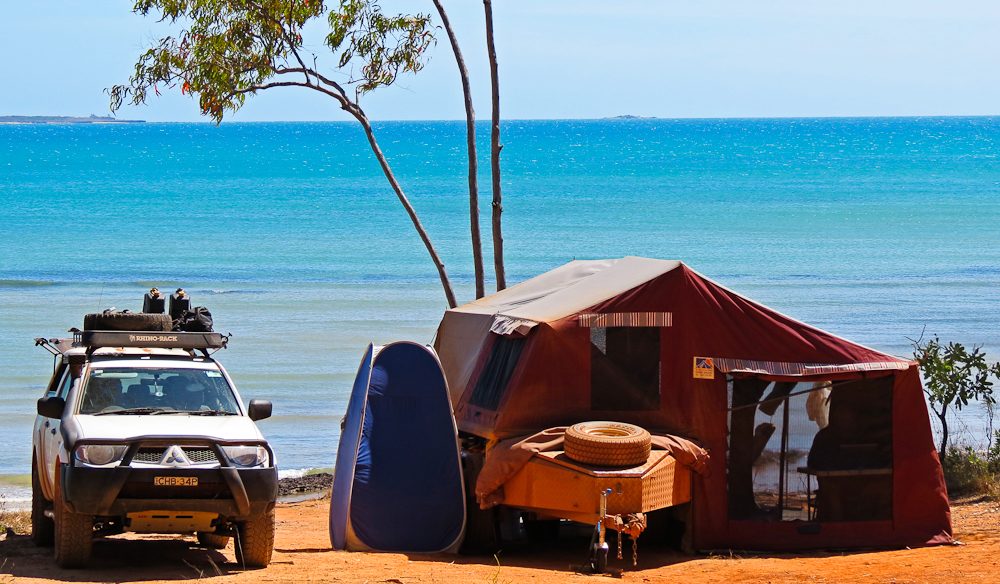
Colourful campsite, Rainbow Cliffs, Arnhem Land (photo: Lee Atkinson).
A basic tool kit should include a jack, jacking plate and wheel replacement tools, spare tyre, fire extinguisher, emergency fuel supplies (if heading off the beaten track), engine oil, coolant, jumper leads and spare radiator hoses and fan belts and the tools you’ll need to replace them – check out YouTube for DIY tips and bush mechanic lessons. Don’t even think about leaving home without ultimate get-out-of-jail repair kit: cable ties, gaffa tape and fencing wire – with these you can fix just about anything.
Getting stuck is inevitable when you’re travelling off the beaten track. You can spend a fortune on fancy recovery gear but there are five things you really can’t do without: we took a pair of Maxx Trax ramps, which you put under the wheels when you’re bogged in sand or mud. They give the tyres something to grip and, as a rule, will launch you out of trouble easily. We also had a long-handled shovel for digging and a snatch strap for those moments when all else failed – all we needed then was somebody else to come along to pull us out, but it was never used. The best way to not get bogged in the first place is to drop tyre pressures to 20psi or less, so we also carried a quality air compressor and an accurate pressure gauge.
Never travel without a first aid kit and always carry extra drinking water. Mobile phone coverage can be non-existent in the outback. Hire (or buy) a satellite phone so you can call for help if needed. Some tourist information centres in remote areas have sat phones you can hire, or visit Satellite Hire or Rent a Sat Phone.
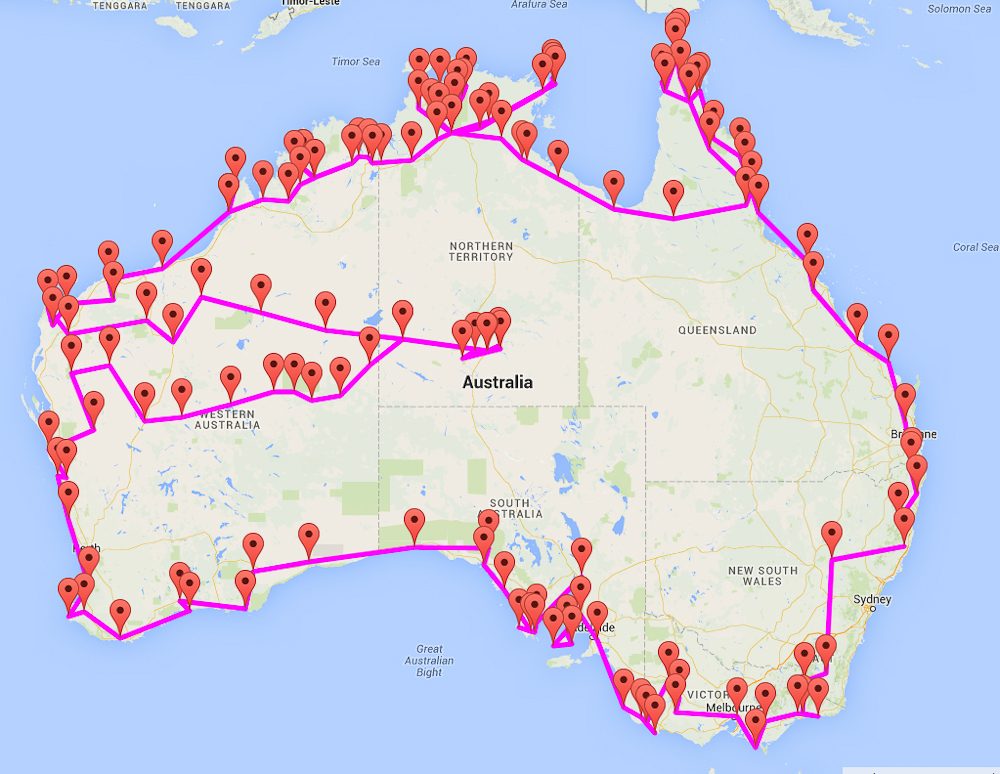
Lee Atkinson’s Big Lap map.
Fighting over which is the right way to go is a major cause of holiday (and marital) breakdown. Don’t rely on the mapping app on your phone – invest in a good GPS. We used Hema Navigator, which features off-road tracks as well as major highways.
These days you can get most of your bills, banks statements etc electronically, which means you can keep the home fires burning relatively easily. Skype is the best thing ever for keeping in touch with friends and family for next to nix. We carried laptops and a 4G mobile wi-fi modem which connects up to 10 devices. Telstra’s the only network that consistently works outside of capital cities.
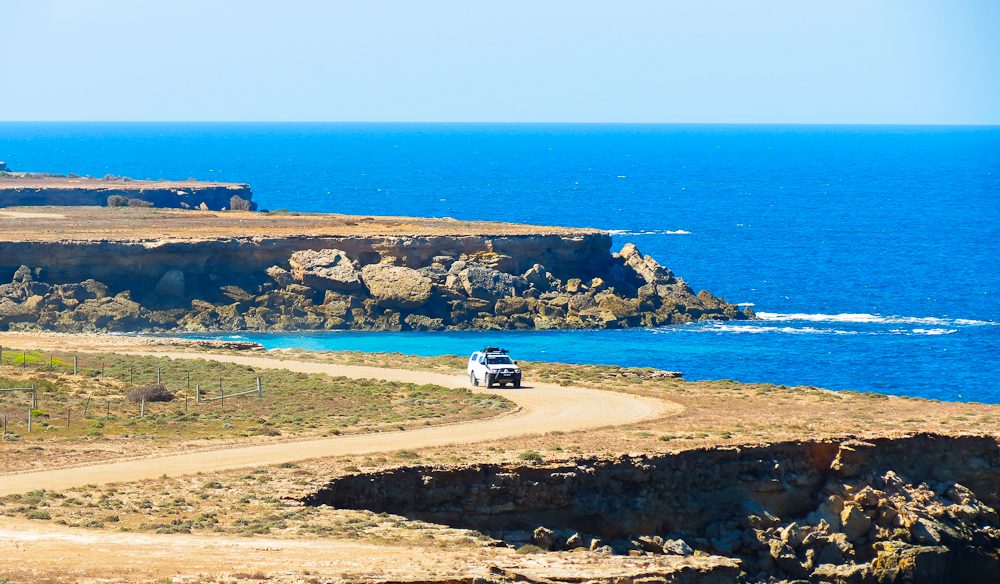
Coast hugging, Troubridge Point, Yorke Peninsula, SA (photo: Lee Atkinson).
Clockwise or anti-clockwise, that’s the million-dollar question when you’re about to head off on the Big Lap. Whether you turn left or right out of your driveway depends on when you go – if it’s summer, head south, if it’s winter, head north or aim for the red centre. The wet season, which cuts roads and closes national parks anywhere north of the Tropic of Capricorn, can be anytime from November through to May, although it (usually) really only starts to rain in mid to late December and can be all over by April.
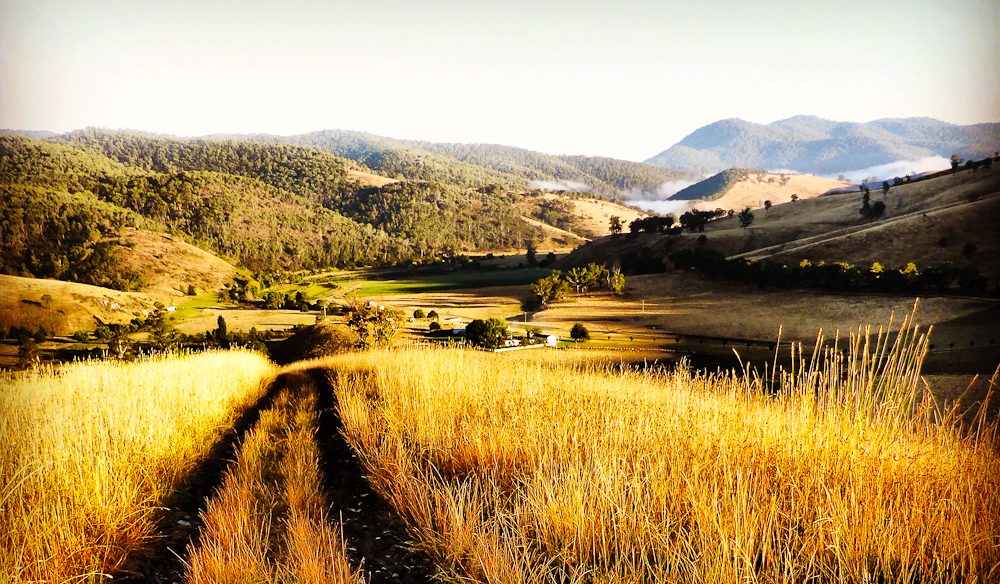
The back way, Gippsland, (photo: Lee Atkinson),
How long have you got? Know that however long you go for, it won’t be enough – Australia’s a big place and you could spend a lifetime and still not see it all. On the other hand, you’d be amazed at how far you can go in just four weeks. We spent 42 weeks on the road, and didn’t go where most do go, but did go where many people don’t.
Everyone’s trip is different, depending on what you drive, where you go, where you stay and what you eat and drink. We were in a 4WD and towing an off-road camper trailer. In terms of day-to-day expenses we averaged just under $150 a day, including fuel, camping fees and the occasional night in a pub if the weather was foul, food and alcohol – we probably could have got that down a little if my partner was a better fisherman, and if I’d chosen cheaper wine, but hey, life’s too short!
Many caravan parks will accept well-behaved pets on a leash, but always check before you book rather than on arrival. Pets are not allowed in national parks, even for day visits or picnics. If you want to bush camp with pets, choose state forests instead.
“We took the road less travelled whenever we could, camping in national parks and other wild places where few other travellers go,” says Atkinson. “We found some truly amazing places and saw some fantastic things, and this book is the result, a showcase of some of the most scenic spots in Australia.” Featuring hundreds of beautiful images, the book is the pictorial diary of her journey with detailed captions telling the stories behind the images. The Big Lap costs $35, (including postage), from ozyroadtripper.com.au
Great tips, thanks for sharing.
No worries, Ian. Is there a Big Lap in your future?
Any tips for solo female travellers doing The Lap?
Hi Jill,
Lee recommends: “sat phone no.1 thing for safety. Really use commonsense if camping alone in remote places. And know how to change a tyre.
Best of luck on your Big Lap.
Let us know how it goes.
Cheers,
Kimberley ! Love it! Best holiday ever!!
Great write,
Four of us planning a full lap trip, which in google maps i calculated roughly 20,000 kilometers. Where to hire the camper trailer and 4WD ? any reference will be helpful. and what time of the year is better for the round trip, which we plan to start at melbourne, canberra, sydney, brisbane, Seisa QLD, Darwin NT, perth, adelaide and end in melbourne. any suggestions will be great.
Big lapping it as we speak… 6 weeks into our 12 months. I totally agree that its common to make the mistake of picking a van for the inside rather than where you can go. Next time I’d love to have a off road option as we’ve already had to miss out on some amazing spots (but with a 7 month old baby size and comfort won this time around so we opted for a big family caravan).
To anyone thinking about it, just make it happen.
You definitely rock the road Lee. You are certified traveller touring around Australia for 10-months. For sure your books defintely has lots of amazing stories with your travel. Need to have one, I been planning for a road trip for a week self-driving. Never done that before and your blog post helps me a lots how to prepare for a long drive.
I’m 63 and have always been interested in walking around Australia’s perimeter for charity, I’m fairly fit and just trekked Everest Base Camp. How long approximately do you think it would take if I don’t have to stop to long because of possible blisters, then maybe u might say how long is a piece of string
Good advice. I am planning a 100-day big lap trip August-November, counter-clockwise from Sydney. I live in the US, so I won’t be able to bring too many things on the plane. Things like ramps to get my car unstuck will have to buy in Sydney before I head out. But I will be bringing my tent. What kind of car should I get for good clearance? I DO want a 4Wd because I plan to do off-the-track places like Cape York and Gibb River Road.
Well said and interesting reading
Enjoyed reading your comments on “The BIG Lap”, have been planning a BIG LAP trip for sometime now and due to the pandemic here in Victoria it’s on hold for now.
My wife and I are semi retired and looking forward to getting on the road as we are keen Caravanner’s and rough it campers, do you recommend storing a caravan at a caravan park to venture off the track?
A good example might be leaving the caravan in Alice Springs and go camping at one of the gorges.
Thank you !for inspiring me to’Just do it!
Thanks for sharing such an incredible post. Very well written and contain important information on driving big lap.